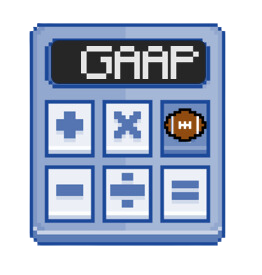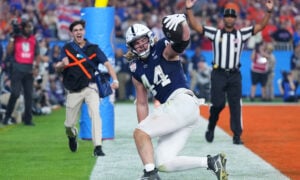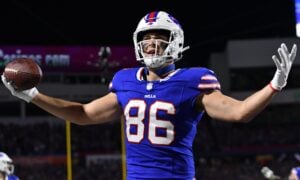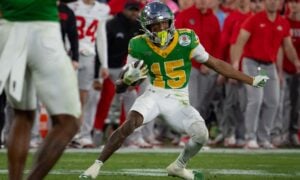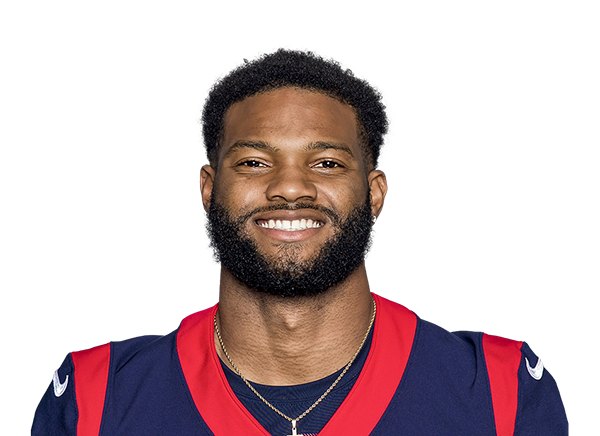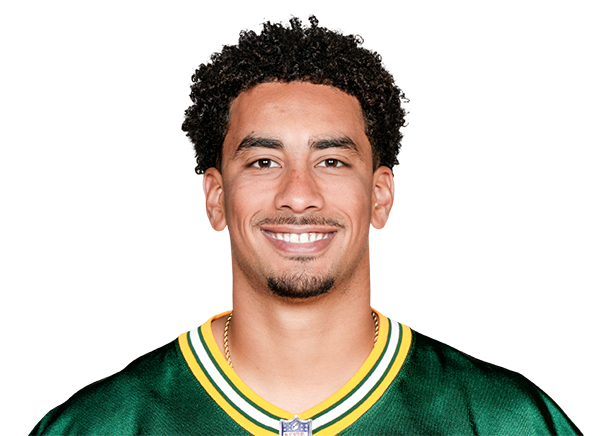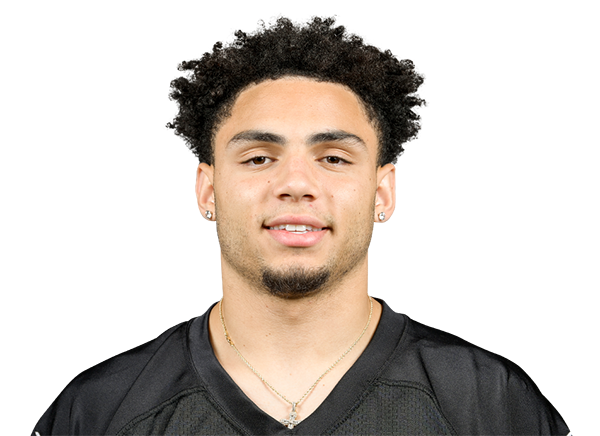Dynasty GAAP Memo: Underperforming Dynasty Wide Receivers
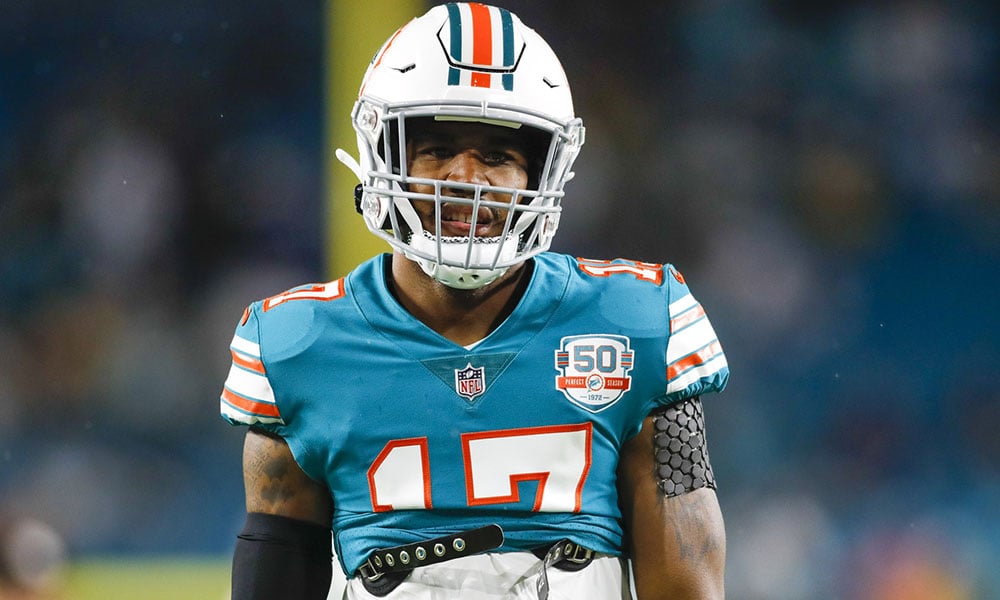
I am a CPA who fits the typical accountant stereotype. I enjoy writing technical accounting memos, accounting research (yes, it’s a thing), and analyzing the financial statements of a business. In accounting, you often must evaluate qualitative and quantitative factors during complex transactions to forecast future performance. I have found that the outlook and rationale of evaluating business transactions parallels another interest of mine, dynasty fantasy football.
In dynasty, we are given both quantitative factors (athletic scores, draft capital, college production, etc.) and qualitative factors (camp hype, team situation, injury history, etc.) that we must consider and evaluate to derive an estimate or projection of a player. Then, we must take calculated risks based on our team’s overall financial statements (i.e., current roster and league). I could go on and on with accounting-based puns and comparisons, but I think you get it.
I will note that I will write in the form of “accounting memos”. For anyone who has not been exposed, the format is very standard. Each memo will start with the “purpose”. Next, it will outline the applicable “guidance” or accounting literature utilized and supply background. Last will be the analysis and conclusion. The goal is to state the issue and quickly address it. My write-ups will follow this same logic.
To summarize, welcome to “Good at Analyzing Players” or “GAAP”. And yes, this is a play on “Generally Accepted Accounting Principles” and my wife did come up with it.
Purpose:
The purpose of this memo is to evaluate the potential upside of some underperforming dynasty cornerstone wide receivers.
Background:
I am going to evaluate some sought-after dynasty assets who have historically been perceived as young “set it and forget it” for championship players. A central theme to a player’s dynasty value is the intersection of production and youth. However, we often overlook another critical element in evaluating a player’s value: upside or ceiling. In business, upside refers to the potential increase in value, measured in monetary or percentage terms, of an investment. The concept of upside is the motivating factor for an individual to invest or acquire an asset (or player). The magnitude of the upside will depend primarily on the risk associated with that investment. This memo will dive into and try to evaluate “dynasty cornerstone” players with the upside theme.
To identify the players to evaluate, I chose players whose upside might be capped due to the situation. They are:
- Tee Higgins, Cincinnati Bengals
- Jaylen Waddle, Miami Dolphins
- DeVonta Smith, Philadelphia Eagles
- DK Metcalf, Seattle Seahawks
These players were identified because they all are valued as borderline WR1s in dynasty (top 13). However, each of them is the WR2 on their team. Higgins is behind Ja’Marr Chase, Waddle is behind Tyreek Hill, Smith is behind AJ Brown, and Metcalf has been outproduced by Tyler Lockett. These players are second in the pecking order on their respective teams which should limit their upside. However, we have seen elite passing offenses produce multiple WR1s in fantasy before. The years below come to mind for PPR scoring (which ironically features some of the players in question):
- 2021 Los Angeles Chargers: Keenan Allen and Mike Williams as WR11 and WR12, respectively.
- 2020 Seattle Seahawks: DK Metcalf and Tyler Lockett as WR8 and WR9, respectively
- 2019 Tamba Bay Buccaneers: Chris Godwin and Mike Evans as WR2 and WR9, respectively.
- 2018 Minnesota Vikings: Adam Thielen and Stefon Diggs as WR7 and WR10, respectively.
- 2018 Pittsburgh Steelers: Antonio Brown and JuJu Smith-Schuster WR5 and WR8, respectively.
While there is a chance that this could happen, there is only one or two teams that produce multiple wide receivers who finish in the top 12 fantasy scoring on average. Managers might be pointing to the outliers for confirmation bias rather than actual upside. This memo will explore the upside of the players above.
Resources:
- Sleeper: Great interface for looking up historical statistics
- DLF Dynasty Rankings: Best dynasty rankings in the industry
- DLF Average Draft Position (“ADP”) Data: Best resource to gauge current player value. Based upon real dynasty startups.
Analysis:
When finance professionals identify investment opportunities, upside is one of the primary considerations in their valuations. Investors want their value to increase exponentially and as quickly as possible between buying and selling an investment. Their goal is to invest $1,000 in Stock A today and have it be worth $10,000 in five years rather than invest in Stock B for $1,000 and have it be worth $5,000 in ten years. In hindsight, both were good investments, but Stock A had a higher upside at the time of purchase.
There are a multitude of ways to quantify and evaluate upside and to predict the future price of an investment. A higher upside means that the stock has more value than is currently reflected in the stock price. Commonly utilized techniques are the use of:
- Technical analysis: Technical analysis is a trading discipline employed to evaluate investments and identify trading opportunities by analyzing statistical trends gathered from trading activity. From a dynasty perspective, this would be examining quantitative data like age, current and historical production, and other metrics.
- Fundamental Analysis: Fundamental analysis measures a security’s intrinsic value by examining related economic and financial factors. For dynasty, this would include evaluating more qualitative data like a player’s situation and opportunity.
Please see the technical and fundamental analysis below for each player:
Tee Higgins, CIN
Higgins is 24 years old and was selected 33rd overall in the 2020 NFL Draft. Per DLF, he is ranked 19th overall and WR13.
Technical Analysis:
From a prototypical X receiver perspective, Higgins looks great on paper. He is 6’ 4” with a 75th percentile speed score with a 95% percentile breakout age. However, the highest he has ever finished in PPR scoring is WR17 in 2022. He also has never exceeded 1,100 yards, 80 receptions, or eight touchdowns in his young career – all of which trend more so with a perpetual WR2 than the WR1 at which he is valued.
Thus far in the 2023 season, not much has gone right for Higgins as he is averaging a measly 10.3 PPR points per game, which is 51st overall on a PPG basis for WRs. Incrementally, he is dealing with a hamstring issue and is already out for week 11.
Fundamental Analysis:
I would expect us to see production more aligned with 2022 than 2023 Once Higgins gets back on the field. Joe Burrow‘s calf injury is behind him and the Bengals offense is picking up steam for their playoff push. However, Higgins is an unrestricted free agent after the season and all records indicate that he will find a new home for the 2024 season. With the change in scenery comes upside. He could, for example, sign for the Carolina Panthers and easily demand 140+ targets (as opposed to his career average of 110).
Jaylen Waddle, MIA
Waddle is 24 years old and was selected sixth overall in the 2021 NFL Draft. Per DLF, he is ranked 10th overall and WR8.
Technical Analysis:
Waddle does not have Higgins’s prototypical size. However, his game-breaking ability is his speed. While Waddle’s career has only been two complete seasons, the two could not be more different. In his rookie season, Waddle was a volume receiver and caught 104 footballs for 1,015 on his way to a pedestrian 9.8 yards per reception and WR13 finish in PPR. After that, he did a complete 180 and transitioned from a volume receiver to a field stretcher. In 2022, he made 75 receptions for 1,356 yards to double his yard per reception to 18.1 yards and finish as WR8 in PPR.
In 2023, the Dolphins are leading the NFL in scoring and are the only team averaging more than 30 points per game. This is normally good news for fantasy assets. However, Waddle is averaging only 13.9 points in PPR, which is 25th on a PPG basis for all WRs.
Fundamental Analysis:
Waddle is in the third year of his rookie contract. Based on his production thus far in his career, we can assume that the Dolphins will pick up his fifth-year option so he is attached to Mike McDaniel and Tua Tagovailoa for 2024 and 2025. While this is great, he is ceiling is potentially capped by the All-Pro receiver, Tyreek Hill, who is on pace for an insane 2,000 yards in 2023. Hill has been outspoken about playing out his current contract which runs through the 2026 season.
While the situation is good, there is competition for touches.
DeVonta Smith, PHI
The NFL’s ‘slim reaper’ is 25 years old and was selected tenth overall in the 2021 NFL draft. Per DLF, he is 15th overall and WR10.
Technical Analysis:
At 170 pounds, Smith is undersized. It did not matter in college when he won a Heisman Trophy at Alabama or thus far in his NFL career. During his rookie season, he had 64 receptions for 916 yards as the Eagles WR1 at the time. However, in 2022, the Eagles added AJ Brown via trade, which many thought would hamstring Smith’s upside. Instead, the Jalen Hurts-led Eagles offense exploded and Smith caught 95 receptions for 1,196 on his way to the first WR1 finish of his career at WR10.
To begin 2023, AJ Brown, like Tyreek Hill above, has been unstoppable. He is the first wideout in NFL history to record at least 125 receiving yards in six straight games. Smith has taken a back seat and only had two WR1 games thus far and is averaging 13.3 points, which is WR30 on a PPG basis – a far cry from his 2022 finish.
Fundamental Analysis:
Like Waddle, Smith is in the third year of his rookie contract and we can assume he stays under team control through the 2025 season. In alignment with Waddle, the team’s WR1 is on a long-term contract through the 2026 season. This in tandem with Jalen Hurts “tush push” around the goal line, limiting Smith’s upside.
DK Metcalf, SEA
Metcalf is 25 years old and was selected 64th overall (second round) in the 2029 NFL draft. Per DLF, he is 17th overall and WR11.
Technical Analysis:
At 228 pounds and 6’3” pounds, Metcalf has the stature to be a force of nature. He began his career with 58 receptions for 900 yards in 2019. He became the DK that we know and love with back-to-back 10+ TD seasons in 2020 and 2021 while finishing as WR7 and WR14, respectively. Since then, Russell Wilson’s deep ball accuracy was traded to Denver and Metcalf fell to WR16 with only six TDs with Geno Smith under center.
In 2023, Smith regressed from his 2022 breakout season and took Metcalf along with him. Through the first ten weeks of the season, DK has averaged 12.8 PPR, which is WR32 on a PPG basis.
Fundamental Analysis:
Unlike the players above who have well-established QBs like Joe Burrow, Tua Tagovailoa and Jalen Hurts, Metcalf’s QB is Geno Smith (or Drew Lock) for the rest of the 2023 and potentially beyond with Smith signed through the 2025 season. While that certainly is not ideal and caps his upside, the most pressing is that he is competing with everyone’s rookie crush Jaxon Smith-Njigba and the constantly undervalued Tyler Lockett for targets. Both of them are producing (or starting to) and signed through the 2025 season, although, Lockett has a potential out in his contract after the 2023 season.
Thus far in 2023, Metcalf has led the team with 7.8 targets per game but is followed closely by Lockett with 7.4 targets per game (1a and 1b). Dynasty managers are aware that rookies often tend to pick up steam towards the second half of the season. While Smith-Njigba is only averaging 5.3 targets per game thus far. He has seven twice in the last four weeks. I would expect that only to continue to increase.
Conclusion:
To quantify the discussion below, I scored each player from one to five for both a technical and a fundamental score. Please see a breakdown below:
- Score 1: No upside.
- Score 2: Slight upside but have not seen it yet.
- Score 3: Average upside and would expect routine WR2 finishes.
- Score 4: Moderate Upside and has potential for WR1 finishes.
- Score 5: Elite upside and we expect WR1 finishes.
The table below summarizes the findings. I will note that these scores were judgmentally derived. However, when evaluating intangible elements like “upside” judgment is often needed.
The purpose of this exercise was not to entice managers to sell these players. It is normally bad practice to sell good football players who have produced early in their NFL careers. Managers need to be cognizant of the “DJ Moore fallacy.” Meaning, Moore has consistently produced since he was a rookie but was always “good not great.” At 26 and in the prime of career, he is WR8, but ranked on DLF as 42 overall and WR23. This is quite a bit lower than the players above, but he is only a year or two older. At a certain point, between the age of 25 and 27, a player’s dynasty value begins to depreciate, especially if the upside does not materialize to WR production. Just ensure you are cognizant of this.
Take-Aways:
- Think about the upside when evaluating players.
- Chase players with upside, especially in rebuilds.
- Do not be afraid to pivot off of these guys for more upside! I traded Metcalf in the offseason for Jordan Addison and that is already paying dividends.
Due Diligence Reminder: Please check on these players if owners are starting to sour. As I mentioned, they all are really really good at football, especially Waddle as I think he has the highest upside.
“Just to test my speed against world-class athletes like this, it’s just a blessing
- Dynasty GAAP Memo: Running Back Maturity Approach and Second-Year RBs - February 20, 2025
- Dynasty GAAP Memo: Post-Mortem Rookie Re-Draft - December 12, 2024
- Dynasty GAAP Memo: Buying The WR Dip Or Falling Knife? - November 14, 2024




